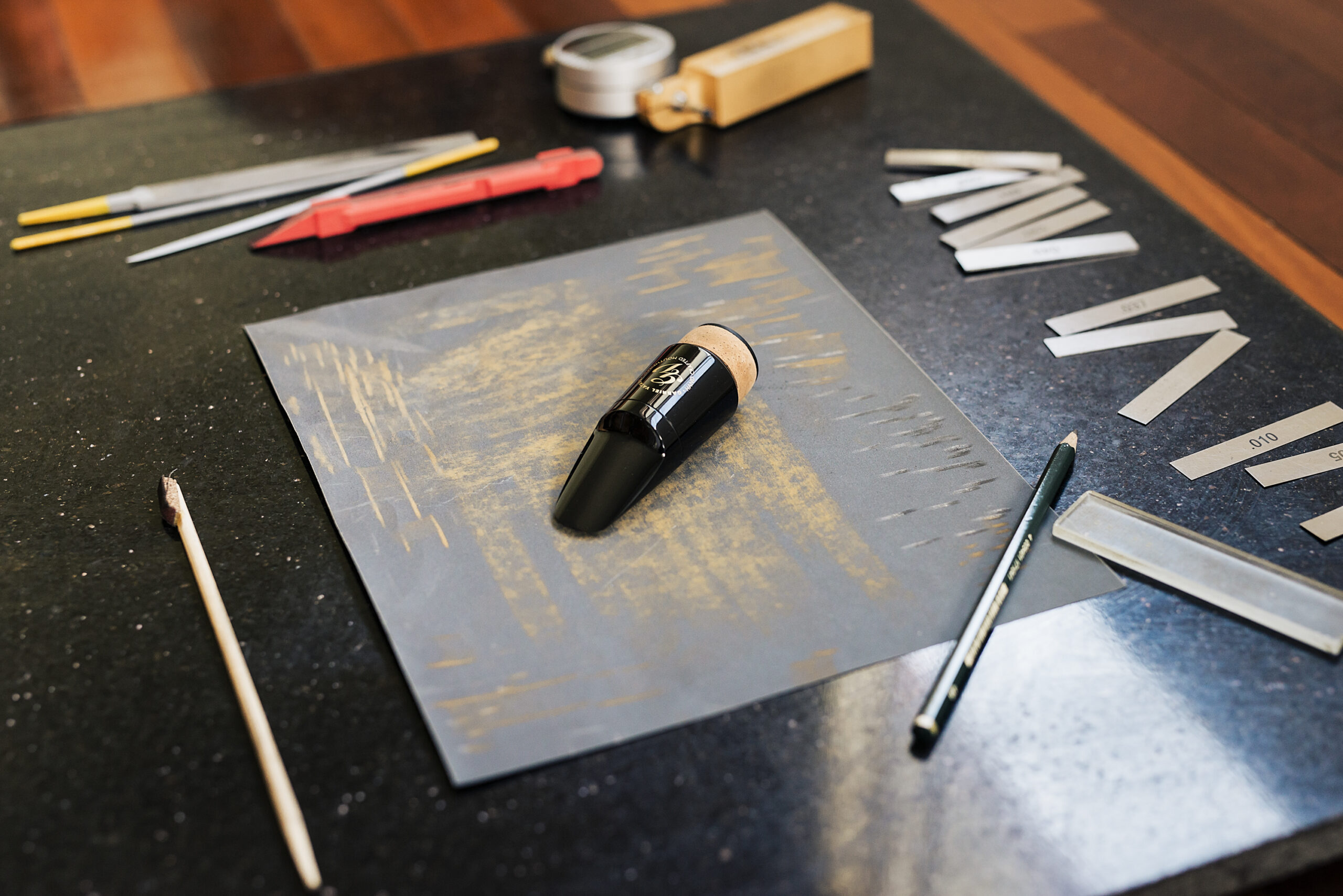Why have my mouthpiece hand refaced?
You can have the greatest instrument, played with a poor mouthpiece will produce a poor sound. Also, the reverse is true, have a poor instrument with a great mouthpiece and I guarantee it will make a much more desirable set up. I’ve seen and heard many saxophone players sounding great on student level saxophones, but having a good mouthpiece. It is a great solution if you are on a budget. Of course, ideally would be to have a great mouthpiece and a professional level horn.
The mouthpieces produced by the big manufacturers are mostly of decent quality, but when you compare that with a meticulously hand finished mouthpiece, the differences become obvious (improved response and dynamic range, better intonation, easier to control and more efficient). I spend anywhere between 4-6 hours on refacing and perfecting a mouthpiece which for the big manufacturers would not be viable.
How exactly will my mouthpiece be improved?
Flatten the table
It is absolutely crucial to have a flat table on a mouthpiece, and believe it or not 90% or more of any factory made mouthpiece will not have a flat table. Because the factory produced mouthpieces have the table and rails cut by CNC machines, the material heats up in the process, and although the machine might have cut it straight, after the mouthpiece cools down, the material relaxes and in most cases the table and rails will warp a bit. The same happens with cast mouthpieces. Although the casting form is designed straight, after the cast material cools down, the table and rails will warp. That is just enough to give you an uneven table and rails; just enough to have a mouthpiece not playing at its full potential. That’s why having the table flatten by hand at a slow pace, will not heat the material and you will have a flat table and the first step toward a great mouthpiece.
Even side rails
Another very important aspect that will make the difference between a great and a poor mouthpiece is having the curve progress absolutely parallel between the left and right side rail. This is one of the reasons many mouthpieces squeak, and will make it hard finding good reeds. Also, having the side rails thickness even and similar ads to the good quality of a mouthpiece.
Even tip rail
The tip rail thickness is something I pay close attention to. Having the tip rail of the same thickness all along, from left to right, it is important for an even response of the reed and good airflow.
Baffle work
The baffle is responsible for most of your tember, projection and making a mouthpiece more or less resistant. Take for instance two Otto link mouthpieces of the same opening. Have one done with a roll over baffle and another one with a straight (wedge like) baffle. The roll over baffle will give you a somewhat nasally sound, as where the straight baffle will give you a more direct, more modern sound, with more projection and less resistance. Because the baffle is the area right underneath the thinner part of the reed, a lot of activity happens there, the reed vibrates the most in this area. It is therefore important that the baffle is shaped uniformly, and matched for the particular opening of the mouthpiece.
The lay or the curve – let’s just call it ‘The curve’ by the way, without the lay
There are a multitude of types of curves that are applied to mouthpieces. Some of them are radial curves (segment of a circle), elliptical curves (segment of an ellipse), some are a combination of different curves joined together, some are combinations of curves and straight lines. Although some of the elliptical curves and some of the combinations of different curves, straight lines and curves might have the mouthpiece playing decently, on saxophones, I preffer and work mostly with radial curves. They will offer good response, consistency throughout registers, it would make larger tip openings respond easier. The reeds interact well with a radial curve and will vibrate freely.
On my mouthpieces I apply a computer generated radial curve, calculated and matched mathematically to the tip opening and facing length. For each tip opening there will be just one matching radial curve. There is no guess work, and certainly there is no room for loose ends. This curve is by far the most important aspect of the mouthpiece. A perfectly executed radial curve, will give you great response whether playing ppp or fff , great altissimo, great subtone. Applying this on the mouthpiece is done by hand, with surgical precision.
I while back I opened up a tenor mouthpiece to .160’ that is a size 13 opening and with a radial curve and matching baffle was playing surprisingly easy and free.
Undercut the window
Many mouthpieces have the area right under the window quite thick. That is adding some resistance to the way the mouthpiece plays. Unless you particularly like resistance, I do shape that area in a manner that would facilitate a good air flow, therefore improving even further the response of the mouthpiece. With a mouthpiece brought to this state you will find that many more reeds will be working, and you will most likely recover your reface cost in the first year just by having a higher percentage of successful reeds.
MOUTHPIECE REPAIR
I also offer the following mouthpiece repair services at an additional fee (not included in the mouthpiece refacing fee):
- BITE PLATE REPLACEMENT
- CHIP REPAIRS
- SILVER AND GOLD PLATING
- ADDED BAFFLES
- CHAMBER MODIFICATIONS

